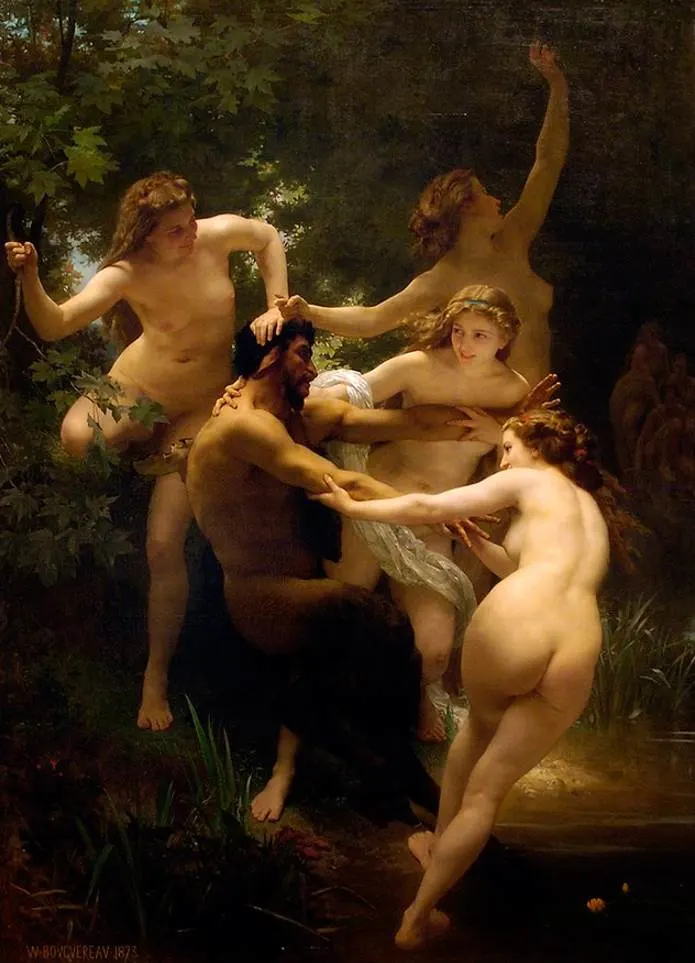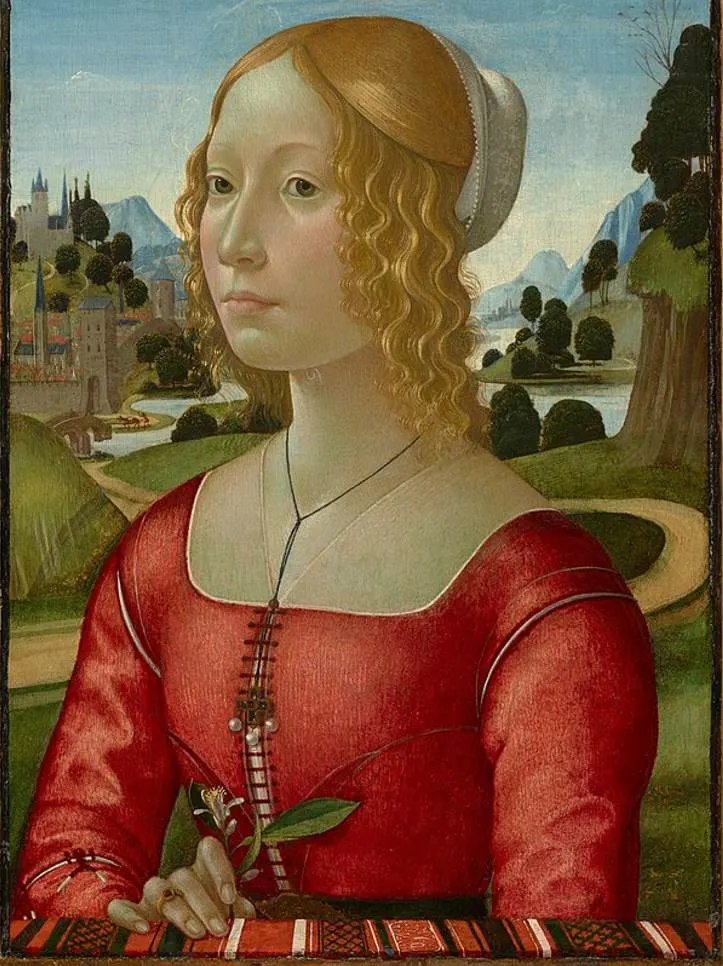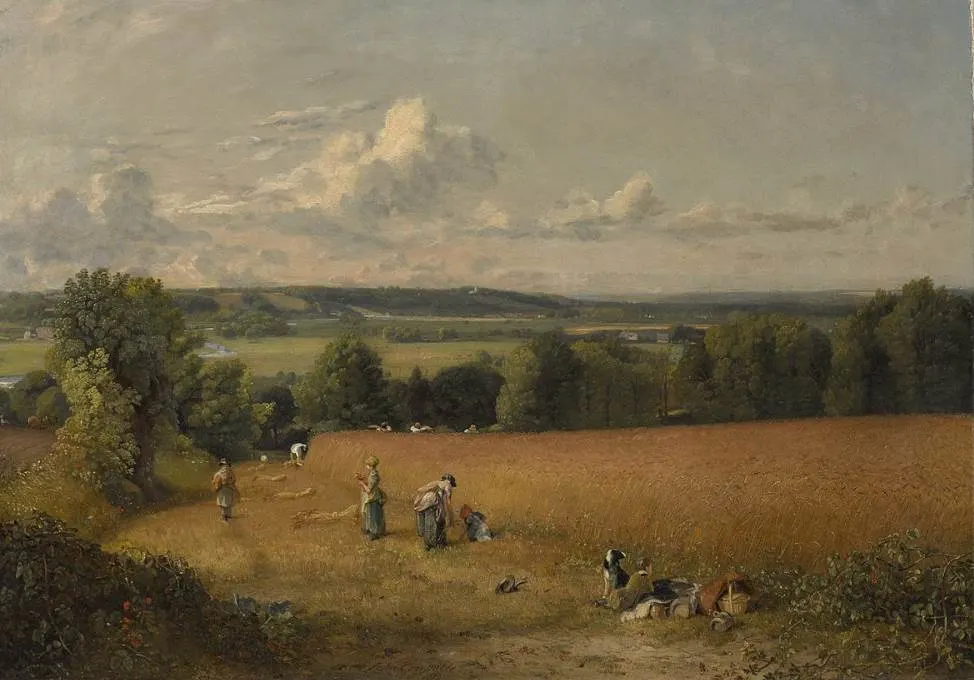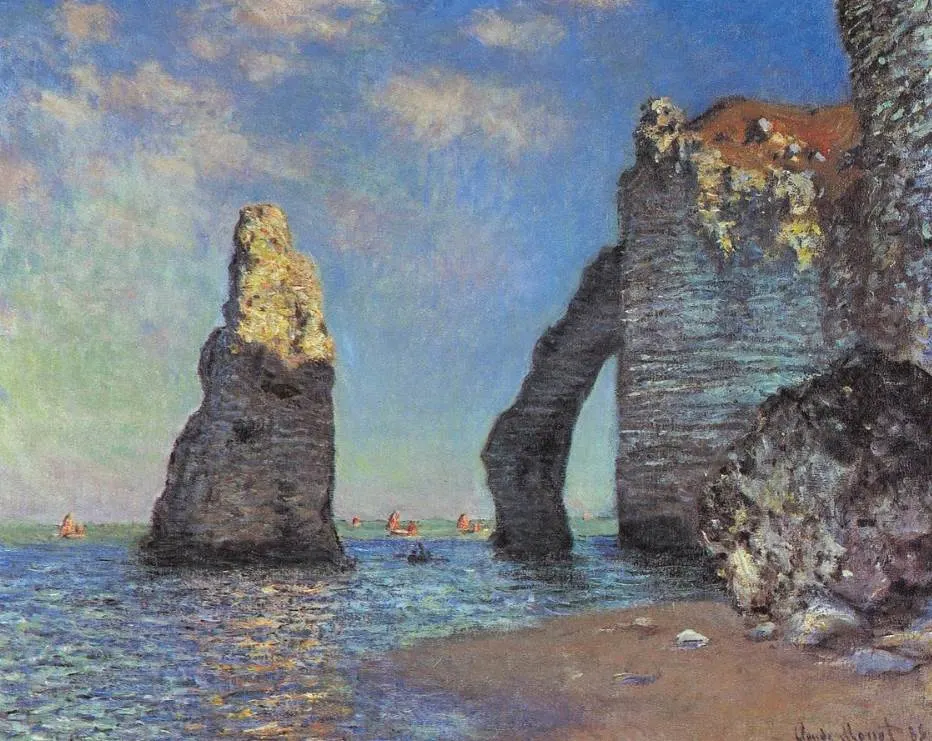The rich heir of the Singer Sewing Machine Company moved to France in the early 20th century and there he purchased his first painting in 1916. Collecting art became his lifelong passion.
Robert Sterling Clark (1877-1956) married a French actress named Francine Clary (1876-1960) shortly after in 1919 and together, they amassed an awe-inspiring collection of paintings.
This collection formed the base of the “Sterling and Francine Clark Art Institute,” a museum in Williamsburg in the utmost northwestern corner of Massachusetts that was established in 1955.
Commonly referred to as “The Clark,” this museum’s collection features both American and European paintings, as well as sculptures, prints, drawings, photographs, and decorative arts.
The museum was opened in a Neoclassical building and it was expanded two times.
These additional galleries are known as the “Clark Center” and the “Stone Hill Center.” The most recent addition cost a whopping $145 million to complete.
The museum is visited by hundreds of thousands of people every year and in this article, you’ll discover some of the most famous paintings at the Clark Art Institute.
1. Woman Crocheting – Pierre-Auguste Renoir
- Date created: 1875
- Dimensions: 73.5 x 60.3 centimeters (28.93 x 23.75 inches)
Woman Crotcheting is a painting by Pierre-Auguste Renoir (1841-1919), one of the leading Impressionist artists in the 19th century. This was the first painting that Robert Sterling Clark and his wife Francine acquired and which set in motion the collection that eventually became the Clark Art Institute.
By the time the museum was opened, the couple had purchased about 30 paintings by the French artist who was one of their favorites. This genre painting depicts a young woman in a middle-class setting as she is focused on doing the common task of crocheting.

2. Nymphs and Satyr – William-Adolphe Bouguereau
- Date created: 1873
- Dimensions: 260 × 180 centimeters (100 × 71 inches)

Nymphs and Satyr is a monumental Neoclassical painting by William Adolphe Bouguereau (1825-1905), one of the leading academic painters of the 19th century. He mainly painted large mythological and historical paintings and integrated a sense of realism that gave them a modern appearance.
This work depicts a scene in which we can see 4 nymphs who are trying to pull a satyr into the water. He just caught them bathing and Bouguereau produced a snapshot of the struggle that ensued shortly after. It was completed in 1873 and acquired by an American art collector a month after it was exhibited at the Paris Salon that year.

3. Virgin and Child with the Infant St. John the Baptist – Sandro Botticelli
- Date created: 1490s
- Dimensions: 88.6 centimeters (34.8 inches) in diameter
Virgin and Child with the Infant St. John the Baptist is a tondo painting that is credited to Sandro Botticelli (1445-1510) and possibly members of his workshop. Although the original painting is located at the São Paulo Museum of Art, Brazil, the painting at the Clark Art Institute is the same and dated around the same time.
Botticelli was a Renaissance master who produced some of the most famous Renaissance paintings in history. The Italian artist created a delicate little work in which the Virgin Mary holds her infant baby Jesus Christ. To add to the drama, a Latin inscription saying “Behold the Lamb of God” was added to the painting’s frame.

4. Portrait of a Lady – Domenico Ghirlandaio
- Date created: 1490
- Dimensions: 56.1 x 37.7 centimeters (22 x 14.8 inches)
Portrait of a Lady is another late 15th-century painting completed by Renaissance artist Domenico Ghirlandaio (1449-1494). It depicts a young lady who would have been considered to be the ultimate representation of female beauty in Florence, Italy, at the time.
Another important element in its painting is the orange blossom that she is holding, a symbol of moral virtue and chastity. Although the identity of the sitter remains unknown until today, it has been suggested that this painting was commissioned to commemorate her wedding. The ring and pendant were common wedding gifts at the time.

5. The Wheat Field – John Constable
- Date created: 1816
- Dimensions: 54.6 x 78.1 centimeters (21.4 x 30.7 inches)
The Wheat Field is a painting by John Constable (1776-1837) and one of the many landscapes that depict the area of his native Suffolk. Because he produced so many magnificent views of this area called Dedham Vale it’s now referred to as “Constable Country.”
He referred to this painting when he wrote to his fiance in 1815 saying “I live almost wholly in the fields and see nobody but the harvest men.” He spent the entire summer of that year living and working outdoors and he magnificently captured the work conducted by plowmen, reapers, and gleaners.

6. Flares in High Seas – J.M.W. Turner
- Date created: 1840
- Dimensions: 92.1 x 122.2 centimeters (36.2 x 48.1 inches)
Flares in High Seas is a painting by J.M.W. Turner also known as “Rockets and Blue Lights (Close at Hand) to Warn Steamboats of Shoal Water.” It was completed during the final phase of the life of Joseph Mallord William Turner (1775-1851) and features the distinctive hazy view that defines many works in his oeuvre.
The main reason why Turner completed his paintings with loose brushstrokes is to enhance the sense of drama as human beings struggle with the elements. This particular painting depicts the moment that flares explode in the sky to warn ships of nearby shallow waters. In the bottom left corner, spectators are watching the struggling ship as it attempts to safely reach the shore.

7. The Cliffs at Etretat – Claude Monet
- Date created: 1885
- Dimensions: 65 x 81.1 centimeters (25.5 x 31.9 inches)
The Cliffs at Etretat is an amazing painting by Claude Monet, a French artist who was one of the leading figures of the Impressionist art movement. This painting depicts the Porte d’Aval, a natural arch near the town of Étretaton on the Normandy Coast of France.
Claude Monet (1840-1926) was an incredibly prolific painter. This is emphasized by the fact that he completed about 50 paintings of the Normandy coast between October and December of the year 1885. The view of this natural wonder seen in this painting was only accessible by boat.

8. Blonde Bather – Pierre-Auguste Renoir
- Date created: 1881
- Dimensions: 82 x 66 centimeters (32.2 x 25.9 inches)
Blonde Bather is one of the many paintings by Pierre-Auguste Renoir that feature the subject of a bathing woman. What’s remarkable about this work is that it depicts Aline Charigot (1859-1915), the future wife of the artist who modeled for numerous of his most famous works.
The painting at the Clark Art Museum is the first of two versions that Renoir completed in 1881 and 1882. The second version is part of the collection of the Pinacoteca Agnelli in Turin, Italy. Another interesting fact is that the Clark version was painted on board a boat in the Bay of Naples.

9. Banks of the Seine at By – Alfred Sisley
- Date created: 1880
- Dimensions: 54.3 x 73.3 centimeters (21.3 x 28.8 inches)
Banks of the Seine at By is a painting by Alfred Sisley (1839-1899), an English artist who moved to France and who lived there for most of his life. He completed this fascinating painting shortly after he had settled with his family in the town of Moret-sur-Loing, just southeast of Paris.
The girl who is walking on the path near the river Seine is believed to be the artist’s daughter Jeanne. It’s one of the paintings that exemplify the Impressionist art movement as the visible brushstrokes produced a remarkable atmosphere. The yellow flowers make us assume it depicts a scene in Spring.

10. West Point, Prout’s Neck – Winslow Homer
- Date created: 1900
- Dimensions: 76.4 x 122.2 centimeters (30 x 48.1 inches)
West Point, Prout’s Neck is the title of a painting by Winslow Homer (1836-1910), an American artist who was one of the leading landscape and seascape artists of his generation. It depicts the wild sea near his studio in Prout’s Neck, Maine, where he lived and worked during the final decades of his life.
This is a remarkable work of art in the artist’s oeuvre because it depicts the view from near his studio as a rosy glow is cast over the vast ocean. Homer considered this to be one of his best works. He carefully studied the sunset and wrote about completing this painting that “the picture is painted fifteen minutes after sunset, not one minute before.”

